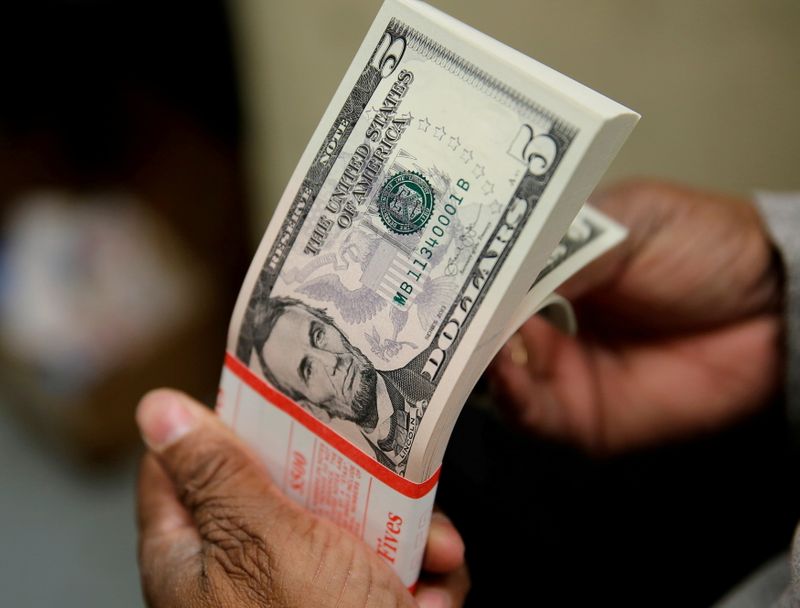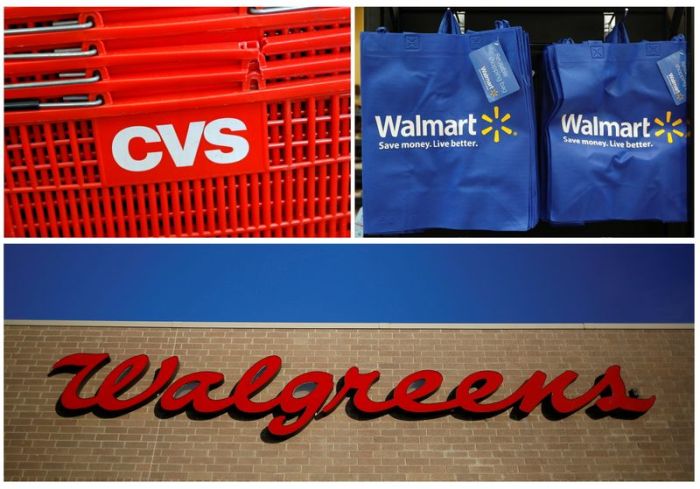By John McCrank
NEW YORK (Reuters) -The safe-haven dollar hit a 16-month high against its major peers on Monday, fueled by global growth and inflation concerns, as well as monetary policy expectations, as investors awaited data this week on the strength of U.S. consumers.
The dollar surged on Wednesday after data showed U.S. consumer prices rose last month at the fastest annual pace since 1990, casting doubt on the Federal Reserve’s view that price pressures will be transitory and fueling speculation that interest rates will be lifted sooner than previously thought.
“I feel like I’m trading back in the ’90s when everybody paid a great deal more attention to what the Fed was going to do,” said Joseph Trevisani, senior analyst at FXStreet.com.
“It’s been a while since we’ve had a real change in comparative sovereign rates and that seems to be where we’re heading.”
The dollar index, which measures the currency against six peers, hit 95.462 on Monday, its highest since July 2020, and was last up 0.274% at 95.394.
Demand for the greenback had softened on Friday, when a report showed consumer sentiment dropped to its lowest in a decade, due in part to the surge in inflation. But it firmed again on Monday after policy makers in Europe and the United Kingdom voiced growth and pricing concerns.
Investors will look to U.S. retail sales data on Tuesday for clues as to where the dollar may be headed next. The data is expected to show retail sales rose 1.1% last month, according to a Reuters poll.
“Following the consumer sentiment data, attention will be firmly on U.S. retail sales tomorrow to see whether the decline in consumer morale is being reflected in retail sales,” said Fiona Cincotta, senior financial markets analyst at City Index.
Gains in the heavily euro-weighted dollar index have also been helped by a decline in the single currency, with European Central Bank President Christine Lagarde continuing to push back on market bets for tighter policy.
Supply-chain bottlenecks and soaring energy costs are slowing euro zone growth and will keep inflation elevated for longer than had been thought, Lagarde said.
Lagarde “reiterating the dovish outlook of policy makers” kept the euro in check, said Jane Foley, head of FX Strategy at Rabobank London.
The euro hit a 16-month low against the greenback and was last down 0.49% at $1.13865.
Versus the Swiss franc, the euro slid to its weakest in 18 months and was last down 0.17% at 1.0524.
Interest in the euro/Swiss franc cross has grown sharply, said Simon Harvey, senior FX market analyst at Monex Europe, “because the Swiss franc is a natural hedge against inflation.”
Swiss National Bank governing board member Andrea Maechler said modest Swiss inflation, at an annual rate of around 1.2%, was capping the franc’s rise. But she reiterated the SNB’s commitment to currency market interventions designed to limit, if needed, the effect that the Swiss franc’s strength has on Switzerland’s export-orientated economy.
In Britain, the pound rose 0.16% to $1.3429 to start off a data-heavy week with employment, inflation and retail sales numbers expected to provide clues on whether the Bank of England will raise rates in December, as expected by markets. On Friday, sterling touched its lowest level this year versus the dollar.
(Reporting by John McCrank in New York; additional reporting by Joice Alves in London; Editing by Emelia Sithole-Matarise, Mark Potter and Dan Grebler)

























